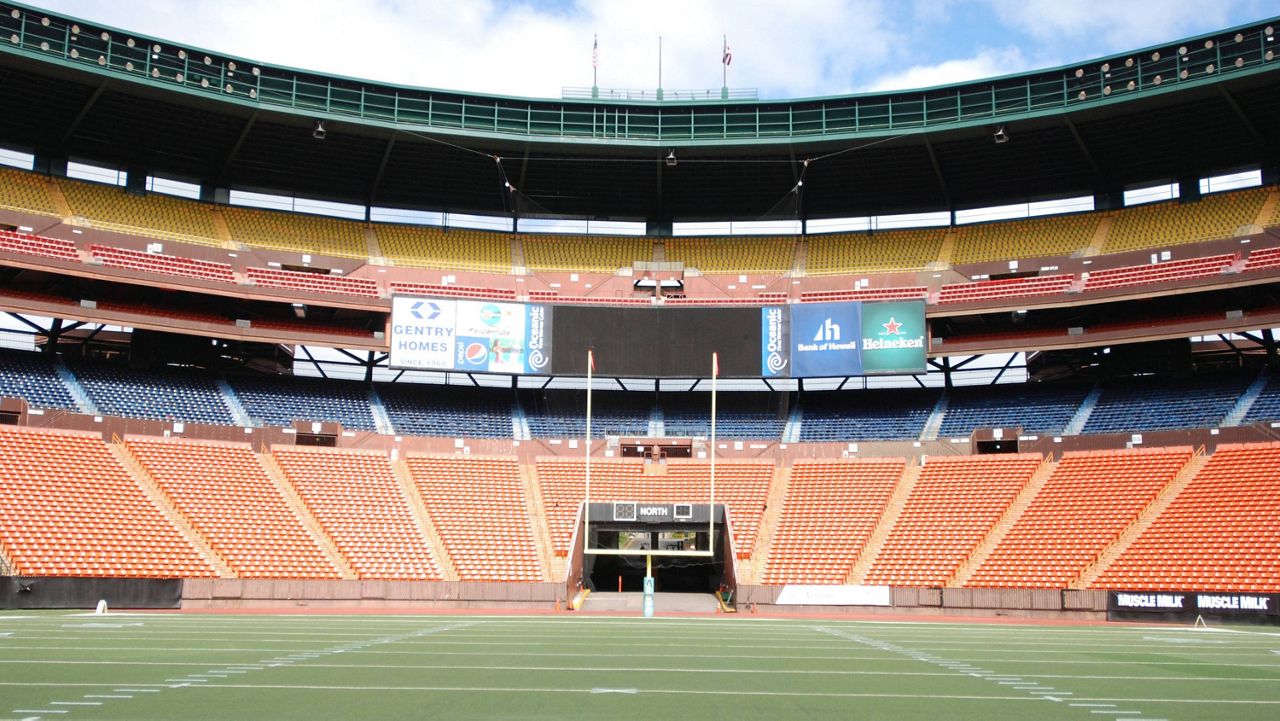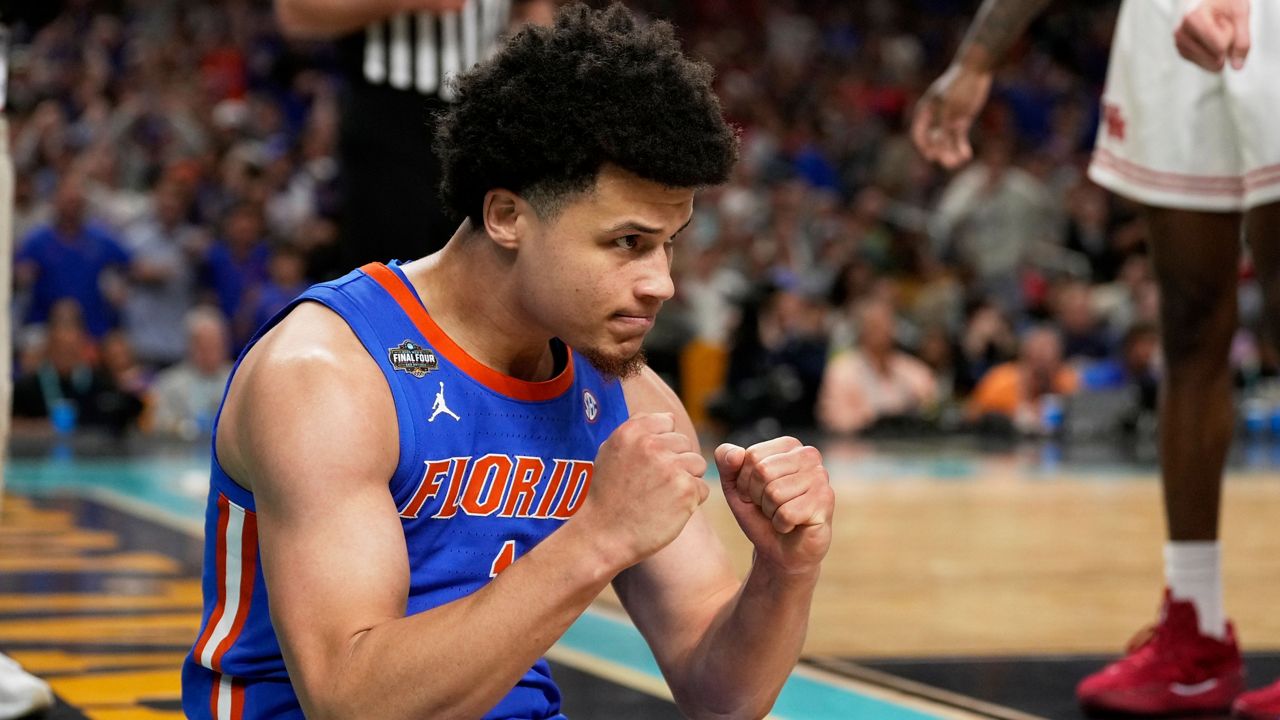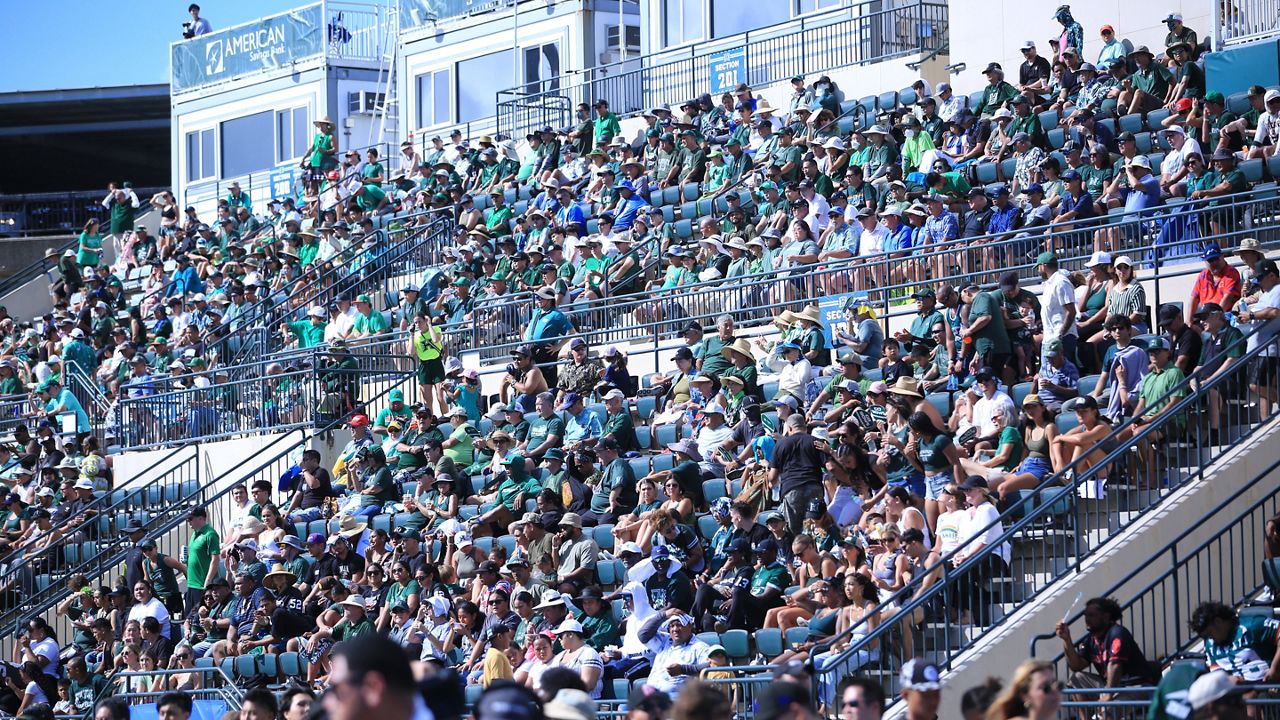HONOLULU — The University of Hawaii is among the parties awaiting a detailed proposal from Gov. David Ige on the future of the embattled New Aloha Stadium Entertainment District project.
Ige announced this week that he’d halted the Request For Proposals process from three teams of private bidders for a public-private partnership, in favor of the state heading up the project itself using $400 million of committed money from the Hawaii Legislature. He promised an announcement within three weeks.
Hawaii News Now reported Wednesday that there is a possible, tentative deal for UH to assume leadership of development and management of the stadium. State Rep. Sylvia Luke, a Democratic candidate for lieutenant governor, told HNN that UH’s experience upgrading the Clarence T.C. Ching Athletics Complex in rapid fashion, among construction of other campus facilities, lent credence to the idea that UH could handle such a project.
However, UH spokesman Dan Meisenzahl told Spectrum News on Thursday afternoon that the university was not ready to weigh in on the idea.
“It is premature for the university to comment on the recent reports regarding the stadium project,” Meisenzahl said. “Significant changes to the current project would require a comprehensive review of all of potential financial, technical, land use and legal issues. The UH administration would then have to present a detailed proposal to the Board of Regents for review and approval at a public meeting, as is required for all major Capital Improvement Projects by the university.”
UH spent about $9.3 million to do its initial six-month upgrade of the Ching Complex to support home on-campus football games in 2021 when 46-year-old Aloha Stadium was condemned for future events in Dec. 2020.
The UH Board of Regents approved in mid-August a $30 million project to expand the venue further in 2023, to about 17,000 seats, and move its track to nearby Cooke Field, citing uncertainty in the NASED project’s future. Previous estimates had the new Halawa stadium usable for UH for the 2027 season while housing and other mixed-use developments on the 98-acre Halawa lot were constructed simultaneously.
Ige, who did not mention the possibility of UH taking over the project in his session on the Honolulu Star-Advertiser's Spotlight Hawaii, indicated that the mixed-use aspect of NASED will still be given consideration, but only after the stadium is tackled. Existing plans for its size and features might still be applied, the governor said.
Attorney Jeff Portnoy, a former member of the Board of Regents, is skeptical that UH is positioned to head up a project of the stadium’s magnitude.
“What facts are there to support the University of Hawaii’s ability to build a freestanding 30,000-to-35,000-seat stadium miles from campus, from scratch, rather than an expansion of an existing facility for which they made modifications?” Portnoy told Spectrum News in a phone interview Wednesday night.
Portnoy said he was in favor of the state taking the lead on building a stadium — about seven years ago, when he was a regent and urged UH to be proactive while Aloha Stadium fell into increasing disrepair.
He lamented that the last two years of public-private partnership planning could result in nothing tangible.
“How much time and talk has gone into this whole entertainment district, of which the stadium would be part?” Portnoy said.
“It just doesn’t make sense. Sure, you can make the university a tenant, and you can work with them on concept,” he added. “But are they going to be the landlord? Is that the plan? If so, that’ll be really interesting. They’re going to run the swap meet, run concerts, lease it to athletic teams like the soccer team?”
He was referring to the United Soccer League’s expressed interest in placing a Hawaii franchise at the stadium. An esports arena at the site was another previously floated idea by State Sen. Glenn Wakai, who represents Halawa.
UH was only a tenant during Aloha Stadium's 46-year run as its home for its football team. Another state entity, the Stadium Authority, controlled things like parking and concessions.
“It’s one curveball after another, and I guess we have to see the details on how they intend to structure this,” Portnoy said.
The NASED project was initially slated for completion in time for the 2023 UH football season.
Brian McInnis covers the state’s sports scene for Spectrum News Hawaii.








